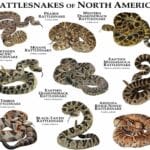Meet the Sonoran gopher snake, a captivating reptile inhabiting the Sonoran Desert. Often mistaken for a rattlesnake, this remarkable snake plays a crucial role in the desert ecosystem. Let’s delve into the intriguing world of this often-misunderstood creature.
Appearance & Identification
One of the most frequent questions about the Sonoran gopher snake revolves around distinguishing it from a rattlesnake. Understanding these key differences is vital for both safety and appreciation of these distinct species.
Gopher Snake vs. Rattlesnake
The most obvious difference is the presence of a rattle. Rattlesnakes possess the iconic, segmented rattle on their tail, while gopher snakes have a simple, tapering tail. Observe the head shape: rattlesnakes have a triangular head, whereas the gopher snake’s head is more oval or rounded. The scales on the tip of the snout (the rostral scale) also differ. On a gopher snake, this scale is roughly as long as it is wide, a helpful distinguishing characteristic. While the Sonoran gopher snake’s reddish-brown, saddle-shaped markings might resemble the diamond patterns of some rattlesnakes, remember these other clues for accurate identification. This mimicry likely evolved as a defense mechanism.
[https://www.lolaapp.com/shunosaurus]
Habitat & Distribution
The Sonoran gopher snake ( Pituophis catenifer affinis ) thrives in arid landscapes across the southwestern United States and northern Mexico, including the Sonoran Desert. Its range extends from central Texas westward to southeastern California and Arizona, continuing south into Mexico. Within these areas, they are most likely found in rocky outcrops, areas with sparse vegetation, and open ground for basking and hunting.
Diet & Behavior
What Do They Eat?
As their name suggests, gophers are a favored food source. However, their diet also includes other small mammals like mice and rats, making them natural rodent control agents. Occasionally, they might consume birds and their eggs, showcasing opportunistic feeding behavior.
How Do They Defend Themselves?
When threatened, the Sonoran gopher snake employs impressive mimicry. It hisses loudly, coils its body tightly, and vibrates its tail against dry leaves or vegetation. This behavior creates a sound remarkably like a rattlesnake’s rattle, often deterring potential predators. It’s a bluff, as these snakes are non-venomous, but undeniably effective. This mimicry has earned them nicknames like “bullsnake,” “blowsnake,” or “buzz-tail.”
Life Cycle & Reproduction
Sonoran gopher snakes reproduce by laying eggs (oviparity). A female typically lays a clutch of 7 to 22 eggs during July or August. The eggs incubate using ambient environmental heat, hatching after several weeks. Young snakes emerge fully independent, ready to face the challenges of desert life.
Role in the Ecosystem & Conservation
The Sonoran gopher snake plays a crucial role in its ecosystem by controlling rodent populations. This helps maintain vegetation and limit the spread of rodent-borne diseases. Unfortunately, habitat loss due to human development and agriculture, combined with being killed due to mistaken identity, threatens their populations. Education about their ecological importance and distinguishing them from venomous snakes is vital for their conservation.
Sonoran Gopher Snake: Venomous or Not?
The Sonoran gopher snake is not venomous. It’s a constrictor, relying on its powerful muscles to subdue prey, not venom. The mimicry of rattlesnakes—hissing, vibrating its tail, and flattening its head—is purely defensive.
What Happens if You Get Bitten?
While non-venomous, a bite can be painful due to their strong jaws and small, sharp teeth. Thoroughly clean any bite wound and seek medical advice if necessary to prevent infection.
How Big Do Sonoran Gopher Snakes Grow?
Sonoran gopher snakes are among the largest snakes in the Southwest, typically reaching 4 to 6 feet long. Females are generally larger than males, with some exceptional individuals exceeding 7 feet in length. Hatchlings start small (around 15.5 inches) but grow rapidly, aided by factors like genetics, prey availability, and environmental conditions. Ongoing research may reveal further insights into their growth patterns.
Bullsnake vs. Gopher Snake: What’s the Difference?
All bullsnakes are gopher snakes, but not all gopher snakes are bullsnakes. Bullsnakes (Pituophis catenifer sayi) are a subspecies within the gopher snake species complex. Key differences include size (bullsnakes can reach up to 8 feet), build (bullsnakes are stockier), pupils (bullsnakes have round pupils, other gopher snakes often have elliptical pupils), and patterns (bullsnakes have bold blotches). While both mimic rattlesnakes, their habitats also differ, with bullsnakes favoring open grasslands and other gopher snakes often found in rockier areas. Ongoing research may further clarify their taxonomy and distribution.
| Feature | Sonoran Gopher Snake | Rattlesnake |
|---|---|---|
| Head Shape | Oval/Rounded | Triangular |
| Rostral Scale | Long as it is wide | Short |
| Tail | Tapered | Rattle |
| Markings | Saddle-shaped blotches | Diamond pattern (may vary) |
| Venom | None | Present |
| Feature | Bullsnake | Other Gopher Snakes |
|---|---|---|
| Size | Up to 8 feet | Typically 3-5 feet, occasionally up to 7 |
| Build | Stockier, more robust | Slenderer |
| Pupils | Round | Elliptical (cat-like) |
| Pattern | Bold, rattlesnake-mimicking blotches | More varied, often less defined, smoother scales |
| Head Shape | Blunt snout | More pointed, sometimes elongated |
| Typical Habitat | Open grasslands | Rocky or brushy areas |
- Who Owns Mercedes Cars? 2025 Update: Unveiling the Shareholders - May 6, 2025
- UAE Federal National Council: Evolution of Participation - May 6, 2025
- Trump’s 2025 Portrait: Unveiled, Analyzed - May 6, 2025
















